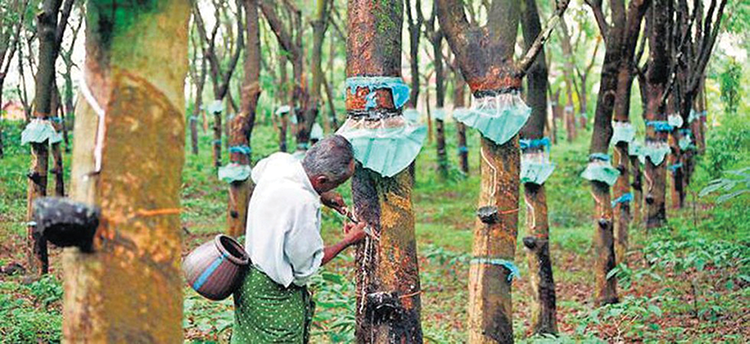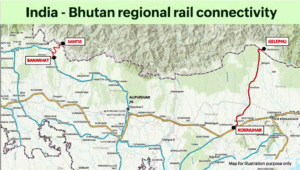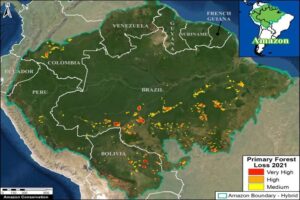
Why in News?
The Rubber Board of India has recently launched initiatives such as the Indian Sustainable Natural Rubber (iSNR) and the INR Konnect Platform to enhance the global prominence of Indian rubber and boost domestic production. These initiatives align with the National Rubber Policy (NRP) 2019, aiming to create an environmentally sustainable and globally competitive rubber industry.
Introduction
India’s rubber industry is a vital component of its agricultural and industrial economy. As the third-largest producer and fourth-largest consumer of natural rubber globally, India faces the dual challenge of increasing domestic production and ensuring sustainability in line with international environmental standards. Recent government initiatives focus on enhancing productivity, sustainability, and compliance with global regulations such as the European Union Deforestation Regulation (EUDR). These efforts not only aim to boost exports but also address challenges like untapped plantations and market inefficiencies.
Key Highlights of Recent Initiatives
Indian Sustainable Natural Rubber (iSNR) Initiative
- Objective: To meet EUDR standards by promoting sustainable rubber production.
Features
:- Facilitates traceability of rubber products through certification of origin and compliance.
- Positions Indian rubber as a competitive and sustainable choice in global markets.
- Simplifies the compliance process for stakeholders targeting EU markets.
Significance
:- Enhances export potential by meeting international environmental norms.
- Promotes sustainable practices in the rubber industry.
INR Konnect Platform
Objective
: A web-based platform connecting rubber growers with adopters to increase productivity.Focus
- Targets 20–25% of untapped plantations owned by absentee landlords.
- Addresses challenges like price drops and high cultivation costs.
Impact:
- Improves utilization of neglected rubber plantations.
- Boosts domestic production through collaborative efforts.
mRube Platform
Purpose
: A digital marketing platform to enhance efficiency in rubber marketing and trade.Benefits:
- Streamlines transactions between buyers and sellers.
- Reduces inefficiencies in the natural rubber trade.
Increased Subsidies for Rubber Cultivation
Plan
: Incremental increase in subsidies to encourage rubber cultivation.Impact
- Supports farmers in adopting advanced cultivation techniques.
- Reduces financial strain on growers, promoting higher yields.
Understanding Key Regulations and Challenges
European Union Deforestation Regulation (EUDR)
What It Is
: A legislative framework to ensure that commodities entering the EU market are free from deforestation.Commodities Covered
: Rubber, cocoa, coffee, soy, palm oil, and related products.Key Objectives
- Prevent deforestation linked to commodity supply chains.
- Reduce carbon emissions by at least 32 million metric tonnes annually.
- Combat forest degradation caused by agricultural expansion.
Concerns for India
Non-Tariff Barriers
Certification requirements pose challenges for Indian exporters.Compliance Burden
SMEs face increased operational costs.Impact on FTA Negotiations
EUDR complicates ongoing India-EU trade discussions.
Rubber Board of India
Established
Under the Rubber Act, 1947, to oversee the development of the rubber industry.Headquarters
Kottayam, Kerala.Role:
- Implements policies for sustainable rubber production.
- Operates the Rubber Research Institute for innovation and technology.
Key Facts About Rubber
Characteristics of Rubber
- Derived from the latex of the Hevea Brasiliensis tree.
- Composed primarily of polyisoprene, a natural polymer.
- Native to the Amazon Rainforest, now widely cultivated in tropical regions.
India’s Rubber Production
Global Rank: Third-largest producer of natural rubber.
Major Producing States
Kerala: Over 90% of production.
Tripura: About 9%.
- Other states: Karnataka, Assam, Tamil Nadu, and the North-East.
Climatic Requirements:
- Temperature: 20°–35°C.
- Rainfall: Over 200 cm annually.
- Grows best in loamy or laterite soils with skilled labor availability.
Trade Scenario
Exports (2022-23)
- Volume: 3,700 tonnes.
- Major Markets: USA, Germany, UAE, UK, and Bangladesh.
Imports (2022-23)
- Volume: 5,28,677 tonnes.
- Sources: Indonesia, Thailand, China, South Korea, and Japan.
National Rubber Policy (NRP) 2019
- Objective: To support rubber production, processing, consumption, and exports.
- Key Goals:
- Increase natural rubber plantations in non-traditional areas.
- Enhance productivity through advanced agro-management practices.
- Align production with international quality standards.
- Achieve 2 million tonnes of natural rubber production by 2030.
Challenges in India’s Rubber Industry
- Untapped Plantations: Significant areas remain underutilized.
- Climate Change: Inconsistent weather patterns affect yields.
- High Costs: Price volatility and cultivation expenses burden farmers.
- Global Competition: Competes with countries like Indonesia and Thailand.
Recommendations to Boost Rubber Production
- Land Diversification: Promote mixed farming systems, particularly in North-Eastern states.
- Scientific Farming: Encourage high-yielding varieties and advanced techniques like high-density planting.
- Research & Development:
- Invest in disease-resistant and climate-resilient varieties.
- Develop innovative tapping methods to enhance latex quality.
- Market Access:
- Expand global markets for Indian rubber products.
- Strengthen digital platforms like mRube to streamline trade.
Conclusion
India’s rubber industry is poised for significant growth through initiatives like iSNR and INR Konnect, aligning with the National Rubber Policy 2019. By integrating sustainability, technological innovation, and market access, India can strengthen its position in the global rubber market. However, addressing challenges like compliance with EUDR and expanding domestic production is crucial for long-term success. For competitive exam aspirants, understanding these developments provides insights into agricultural policies, trade dynamics, and environmental regulations.




